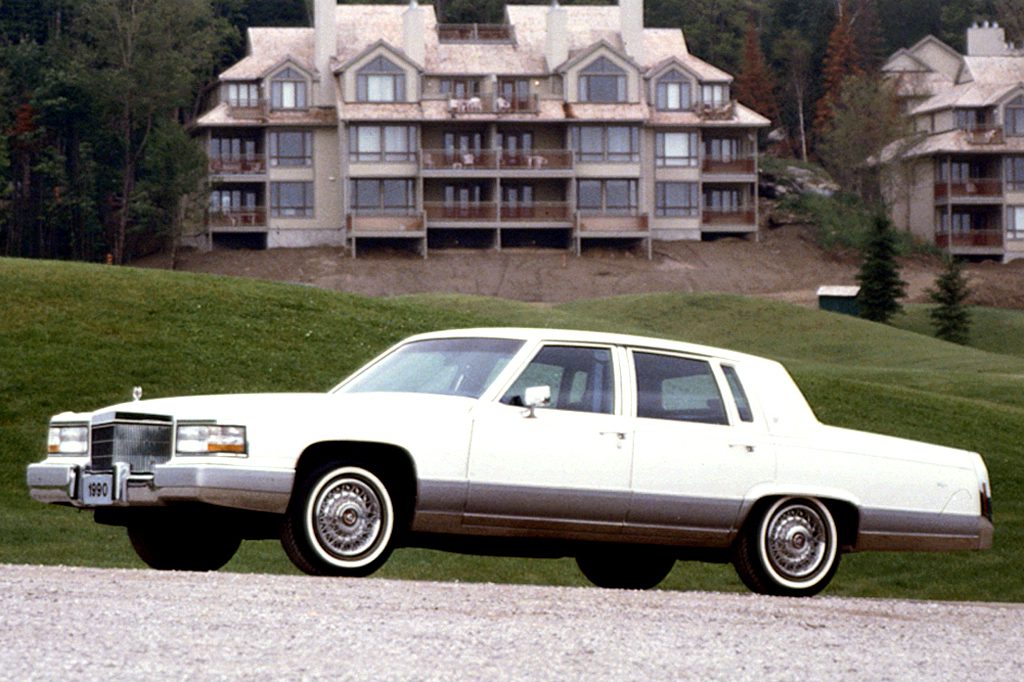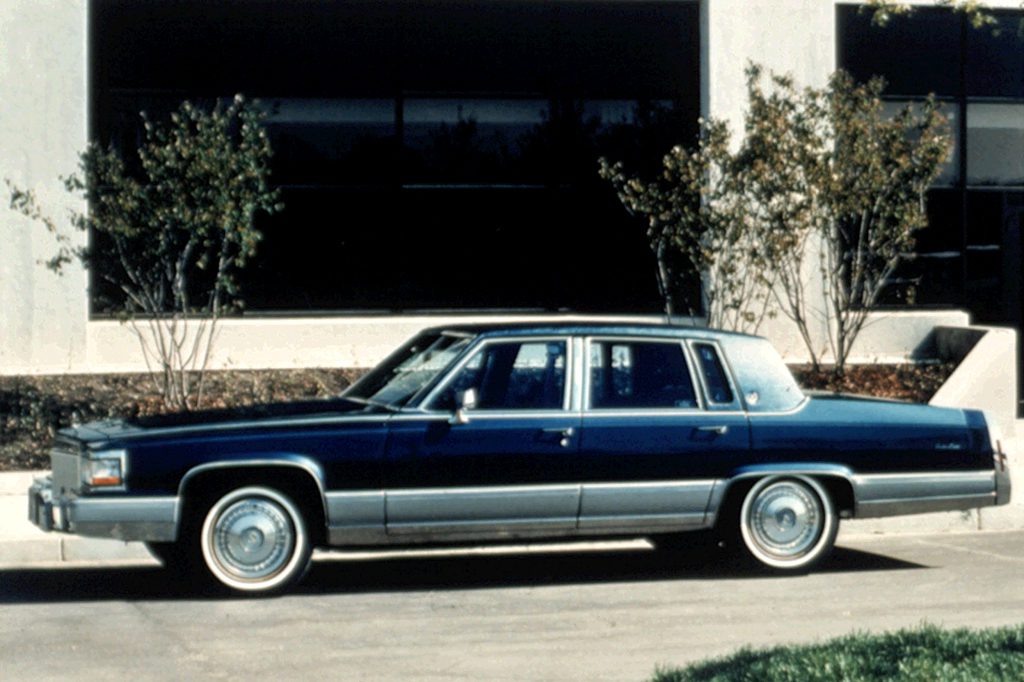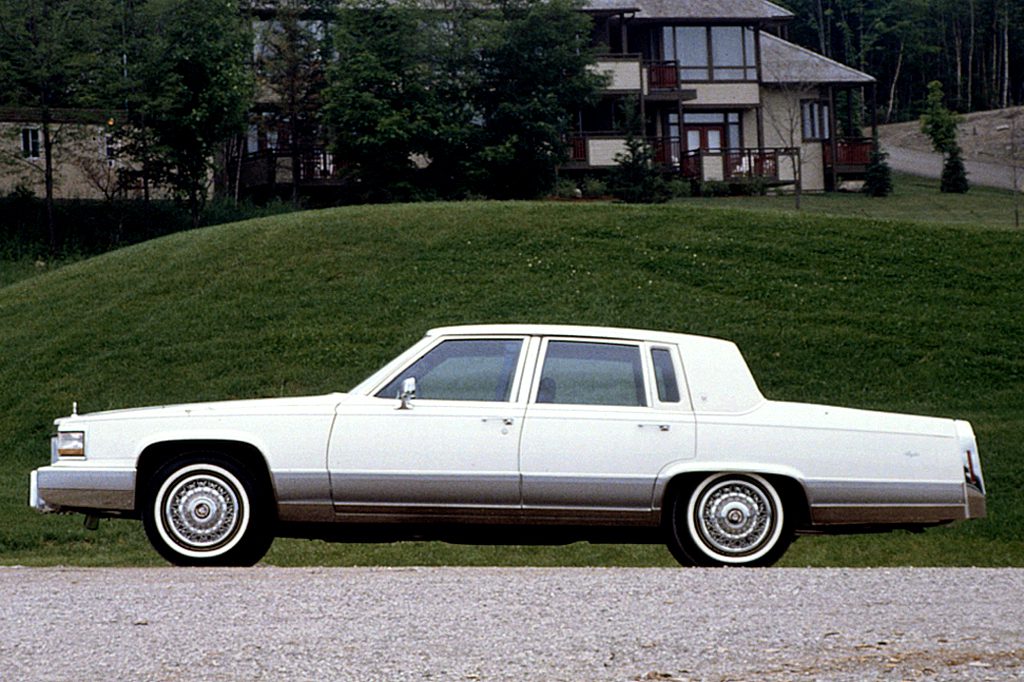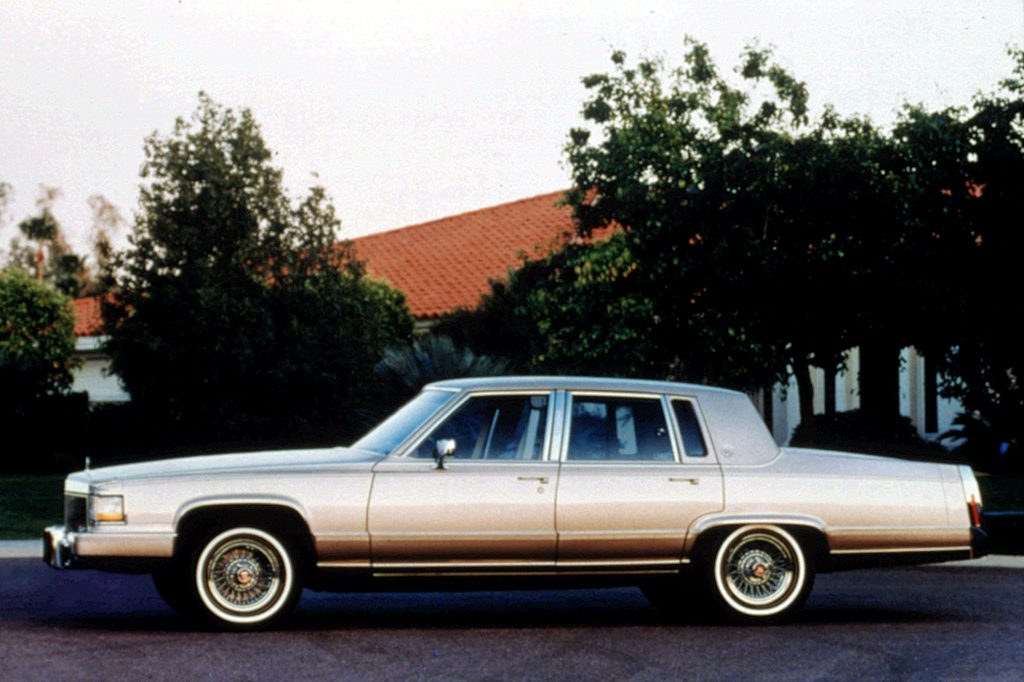| Premium large car; Built in USA |
|
|
| Good condition price range: $1,300 – $2,300* |

1990 Cadillac Brougham

1990 Cadillac Brougham

1990 Cadillac Brougham

1991 Cadillac Brougham

1992 Cadillac Brougham
| Pros: |
|
| Cons: |
|
Despite their traditional virtues, these old-timers are undeniably overweight and clumsy compared to most other luxury sedans, including Cadillac’s own DeVille/Fleetwood, the Lincoln Continental, and the Chrysler Imperial and New Yorker Fifth Avenue. Even so, these big rear-drive Caddies still have legions of fans, many of whom wouldn’t want anything else on the market.
Overview
At 221 inches overall, the 4-door Brougham sedan ranked as the longest car built in the United States–an inch longer than the Lincoln Town Car, which was redesigned for 1990. That year, a fuel-injected 5.7-liter V8 became available, rated at 175 horsepower, as an alternative to the standard carbureted 5.0-liter engine. Antilock braking also arrived for 1990, as standard equipment. Broughams earned revised exterior styling, though the changes were not dramatic. New standard features included an electronic instrument cluster, rear-window defogger, and black walnut burl interior trim.
Yearly Updates
| 1991 Brougham A more powerful standard V8 that added fuel injection went into this season’s Broughams. Meanwhile, the optional 5.7-liter V8, which was attracting plenty of buyers, gained 10 horsepower. A new electronically controlled variable-assist power-steering system increased steering effort gradually above 20 miles per hour. Broughams also got firmer springs and new deflected-disc shock absorbers. |
| 1992 Brougham Towing capacity grew by a ton this year, to a whopping 7000 pounds. The optional towing package included the 5.7-liter V8, a 3.73:1 axle ratio (versus standard 3.08:1 ratio), higher-rate springs, limited-slip differential, heavy-duty rear drum brakes, and an auxiliary engine-oil cooler. A new full-size sedan, named Fleetwood, replaced the Brougham for 1993. |
